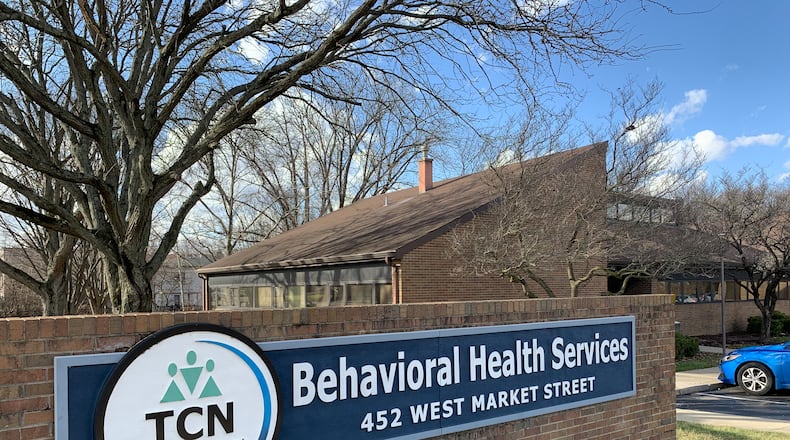At Wright State University, 12 of the 107 graduating medical students, or 11.2%, have matched into psychiatric residencies, the third highest percentage in the class behind internal medicine and family medicine.
“We’re living in this era where we understand a lot more about the brain,” said Brian Merrill, professor and Psychiatry Residency Program Director at Wright State. “As we understand more and more about neurobiology, you’re attracting other people who maybe weren’t into the idea of doing psychiatry.”
It’s not just doctors who aren’t able to keep up with demand. Therapists are also in short supply, said Lisa Carter, CEO of South Community Behavioral Health.
“It’s a tight and competitive environment,” she said.
The number of people who have sought mental health services at South Community, as well as referrals from hospitals, courts, and Children’s Services, have all gone up, Carter said.
“The pandemic certainly changed our world in so many ways, and now coming out of the pandemic, the weariness that people feel, the isolation, anxiety and depression are increasing, and the transitions ‘back to normal’ are not easy,” she said.
In the wake of the COVID-19 pandemic, the number of Americans who reported symptoms of depression or anxiety fell from 40% to around 32%, per data from the Kaiser Family Foundation. However, that number still remains well above pre-pandemic levels.
Additionally, many active psychiatrists are getting ready to retire, as over 60% of psychiatric doctors are 55 or older, the American Association of Medical Colleges found in 2019.
Changes in public and insurance policies may be one way to address the challenges. Mental health services in Ohio have shifted to where those specializing only in mental health have gone out of business, or have supplemented their care with substance abuse disorder treatment as a way to financially sustain themselves, said Lori Strobl, CEO of TCN Behavioral Health.
This is in part because while salaries for doctors, therapists, and providers have increased over years, Medicaid and insurance compensation for mental health disorders have not, Strobl said.
“Reimbursement rates from insurance, Medicaid or otherwise, have not been changed in over 20 years,” Strobl said. “We still have a robust psychiatry department, but we suffer an extreme amount of loss. I’m talking millions.”
By contrast, reimbursement rates for substance abuse have increased, Strobl said, as have the number of providers tackling substance abuse. However, the field suffers from a similar, if not more pronounced lack of doctors. Specializing in addiction medicine is something a doctor would choose after completing their residency, Merrill said, already over a decade of schooling.
Ohio has a more robust Medicaid portion for mental health treatment, but many private insurance providers still lag behind, Merrill said. Private insurance can oftentimes be a barrier to getting proper mental health care, forcing families to pay for certain mental health and addiction treatments out of pocket.
“Addiction is commonly viewed as a moral failing, that if somebody just wanted to stop using drugs or drinking alcohol or whatever, they would,” Merrill said. “So a big part of it is helping people understand the neurobiological basis of addiction, that there are characteristic changes in brain structure and function that cause an Addiction Disorder.”
Advanced Practice Registered Nurses, or APRNs, have been one way to fill the gap. APRNs practice under a psychiatrist’s license, and are able to prescribe medication, without the long and intensive schooling (and student debt) of being a doctor.
“APRNs sort of thread that needle,” Merrill said. “We’ve had this thing about psychologists prescribing medications in Ohio, but if you’re going to give somebody a medicine, even if something as simple as an SSRI, it’s still going to interact with their body in a way that might be helpful to be a physician.”
While APRNs fill an important role, psychiatrists are still necessary, especially to treat the worst cases of severely mentally ill patients, Strobl said.
“Most APRNs, especially if they’re new out of their practice, they don’t have that level of experience. They cannot handle really acute level of clients,” she said.
Another solution is to get general practitioners and family doctors involved in substance abuse care, Merrill said.
“Addiction is seen in the medical community, sometimes as ‘It’s not my problem,’” Merrill said. “But if you’re a surgeon, and a person comes in to get their gallbladder out, and you don’t ask the right questions, all of a sudden you have somebody who’s in alcohol withdrawal because they didn’t want to drink alcohol the night before. We need everybody to be trained, given the prevalence of these disorders.”
About the Author


